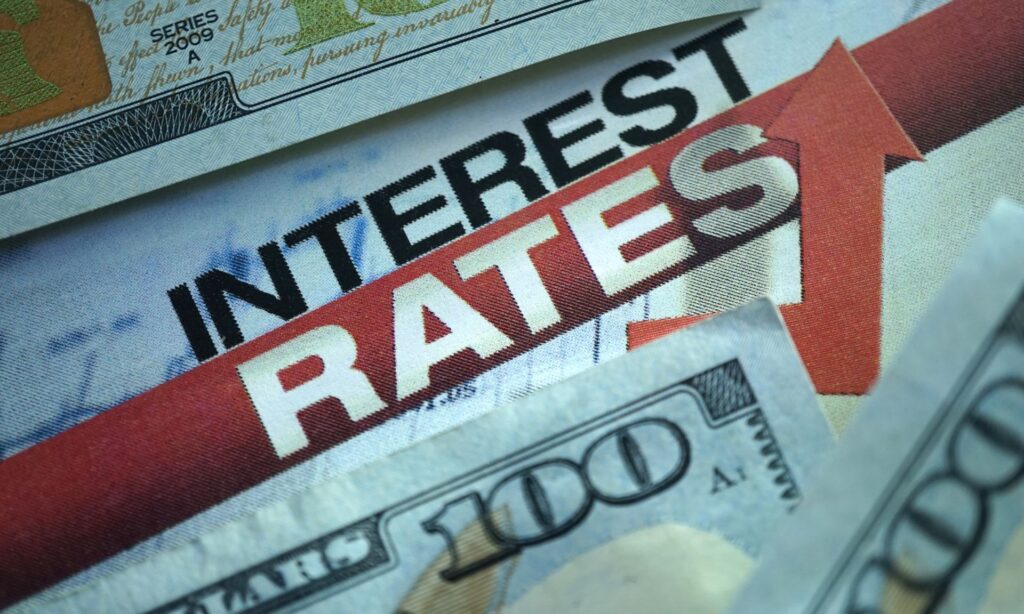The interest rate and annual percentage rate (APR) are two important figures to understand when taking out a loan, especially a mortgage. While they may sound similar, they refer to related but distinct metrics that measure the cost of borrowing money.
What is Interest Rate?

The interest rate is the amount of interest charged on the principal amount of a loan, expressed as a percentage rate. For example, if you take out a $200,000 mortgage with a 5% interest rate, you will pay $10,000 per year in interest charges (5% of $200,000).
The interest rate does not include any fees or additional costs associated with obtaining the loan – it only represents the cost of borrowing the principal amount. Interest rates on loans like mortgages and auto loans can be fixed (meaning they stay the same over the life of the loan) or variable (they fluctuate based on market conditions).
What Factors Influence Interest Rates?
Interest rates are primarily determined by the federal funds rate, which is set by the Federal Reserve. However, many other macroeconomic factors also impact interest rates, including:
- The state of the economy – Interest rates tend to be lower when the economy is struggling and higher when it is thriving. This allows the Fed to stimulate lending and spending during recessions.
- Inflation – As the prices of goods and services rise, the Fed often raises interest rates to keep inflation under control. Higher interest rates make borrowing money more expensive.
- Bond market yields – The yields on government treasury bonds heavily influence mortgage rates and other consumer borrowing rates.
In addition to macroeconomic conditions, your personal financial profile also determines the interest rate you can qualify for. Important factors lenders consider include your:
- Credit score – The higher your score, the lower interest rate you can typically obtain.
- Debt-to-income ratio – The lower your DTI ratio, the better interest rate is usually available.
- Down payment amount – A larger down payment signals less risk for the lender, resulting in a lower rate.
What is APR?
While interest rate refers only to the cost of borrowing the principal amount, APR provides a more comprehensive view. APR stands for “annual percentage rate” and represents the total cost of borrowing money on an annualized basis.
The APR includes the interest rate plus any additional fees and charges associated with the loan, such as:
- Origination fees
- Closing costs
- Mortgage insurance premiums
- Discount points
- Application fees
- Appraisal fees
- Prepaid interest
By factoring in these fees and costs, APR gives you a better picture of the true cost of borrowing. This allows for an apples-to-apples comparison between loans that may have the same interest rate but different fees.
For example:
- Loan A has a 4% interest rate and $5,000 in fees
- Loan B has a 4.5% interest rate but no fees
While Loan B has a higher interest rate, its APR would likely be lower once the fees are factored in.
READ ALSO: A Beginner’s Guide to Interest Rates
How is APR Calculated?
The mathematical formula for APR relies on complex actuarial equations. However, the general methodology is:
- Take the loan’s interest rate
- Add the upfront fees and recurring costs over the loan term
- Translate the total fees into an equivalent interest rate
- Combine with the original interest rate
For example:
- $200,000 loan at 4% interest
- $6,000 in total loan fees
- 30-year term
The $6,000 in fees is equivalent to 0.7% interest per year. Add that to the 4% stated rate for an APR of 4.7%.
APR calculations require making assumptions about the loan term, payment amounts, timing of fees, etc. So actual costs may differ somewhat.
Why is APR Higher than Interest Rate?
In nearly all cases, the APR will be higher than the stated interest rate since it includes additional fees and costs. The only exception would be if there are literally zero fees associated with the loan.
It’s not uncommon for certain types of loans to advertise very low “teaser” interest rates. But once the lender fees and charges are incorporated, the APR gives a more realistic view.
This doesn’t necessarily mean the loan is trying to hide anything. It just demonstrates why APR often better captures the true cost of borrowing.
When to Focus on Interest Rate vs. APR?
As a borrower, it’s important to consider both metrics:
Favor interest rate if:
- You plan to pay off loan quickly
- Minimal fees on loan (so APR less relevant)
- Comparing fixed-rate loan offers
In these cases, focus more on identifying the lowest interest rate possible.
Favor APR if:
- Taking out a longer-term loan
- Loan has significant fees
- Comparing fixed loans to ARMs
- Want to understand total costs
The APR will give you a more complete picture of the costs in these situations. This is especially true for long-term loans like mortgages, where upfront fees have an amplified impact over 30 years.
Interest Rate vs. APR Example
Here is a side-by-side example to demonstrate the difference:
| Loan Terms | Loan A | Loan B |
| Mortgage Amount | $200,000 | $200,000 |
| Interest Rate | 3.5% | 3.25% |
| Origination Fee | $1,500 | $3,000 |
| Discount Points | 1.5 ($3,000 paid upfront) | 0 |
| Total Upfront Fees | $4,500 | $3,000 |
| APR | 3.861% | 3.538% |
In this case:
- Loan B has a lower interest rate at 3.25%
- But Loan A has a lower APR at 3.861% when fees are included
So while Loan B’s interest rate seems more attractive, Loan A is actually the cheaper option overall once all costs are factored in.
This demonstrates why carefully considering both metrics is important when evaluating loan offers.
READ ALSO: 2024’s Best Mortgage Rates for First Time Home Buyers
Shopping for the Best Rate and APR
Follow these tips when comparing loan offers:
- Get personalized rate quotes from multiple lenders
- Ask lenders to disclose all fees they charge
- Calculate the APR yourself using online tools
- Negotiate discounts on lender fees when possible
- Lock interest rates by buying points or with a rate lock agreement
- Evaluate differences in fixed-rate loans vs. ARMs
The best financing option balances the lowest interest rate with the overall lowest APR. Shop around and run the numbers to identify the most cost-effective loan for your situation.
To Recap
Calculating both the interest rate and APR provides the full picture of loan costs over time. While interest rate represents the pure cost of borrowing principal, APR gives a more comprehensive view by including fees and charges.
Carefully evaluating these two metrics allows borrowers to make an informed decision when financing a large purchase like a home or vehicle. Keep these key takeaways in mind:
- Interest rate reflects the cost of borrowing money on the principal amount
- APR factors in interest rate plus loan fees and recurring costs
- APR gives a more complete view of true costs over the loan term
- Shop for the optimal balance of low interest rate and overall low APR
- Consider term length, loan type, and your timeline when deciding what to prioritize
As you navigate the lending process, be sure to get rate and fee estimates in writing and use APR calculators to make accurate comparisons. Getting clarity on both ends of the borrowing cost spectrum empowers you to find the most financially sound loan option.
While the math behind APR and interest rates is admittedly complex, taking the time to understand these key principles is invaluable for anyone financing major expenses like a home, car, or education. Even a small difference in rates or fees can equate to tens of thousands of dollars over decades of loan payments.
Arm yourself with the knowledge of these core lending concepts before signing on the dotted line. Enlisting the help of a loan officer or financial advisor can also help you make sense of the numbers to identify your best path forward. With smart planning and research on the front-end, you can feel confident pursuing your financial goals while minimizing costs over the long run.
Frequently Asked Questions
Can APR be lower than interest rate?
No, the APR can either be equal to or higher than the stated interest rate, but never lower. The interest rate solely reflects the cost of borrowing principal, while APR adds in fees.
What is a good APR for a mortgage?
A good APR depends on the current market rates and your personal financial situation. As of Q1 2023, the average 30-year fixed mortgage rate is around 6.5% APR. Under about 5-6% could be considered a “good” APR right now.
Does 0% APR mean no interest?
Yes, a 0% APR loan does not charge interest on the principal. But other fees could still apply. And 0% financing deals are usually limited-time introductory offers on credit cards or auto loans.
Can lenders change APR after locking interest rate?
In most cases, your locked interest rate and APR cannot change. But factors like a change in home appraisal value or loan type could lead to adjustments before closing. Ask your lender about the rate lock policy.
What APR should I aim for when buying a house?
There is no single “right” APR to target for a mortgage, as many variables impact rate quotes. The best practice is to compare offers from multiple lenders and identify the overall lowest APR loan that also fits your budget. Expect to pay a higher APR if you have a lower credit score or down payment amount.
In another related article, Did the Federal Reserve Just Raise Interest Rates?





